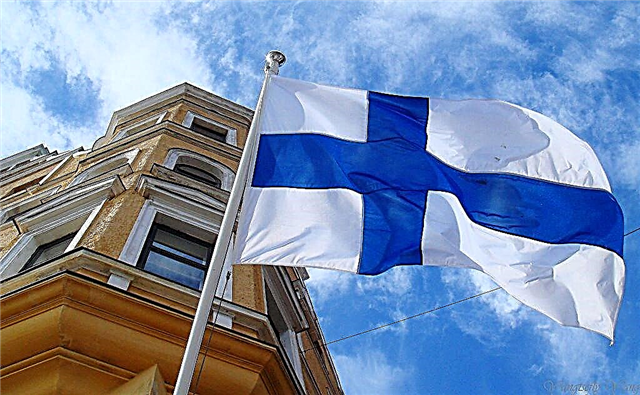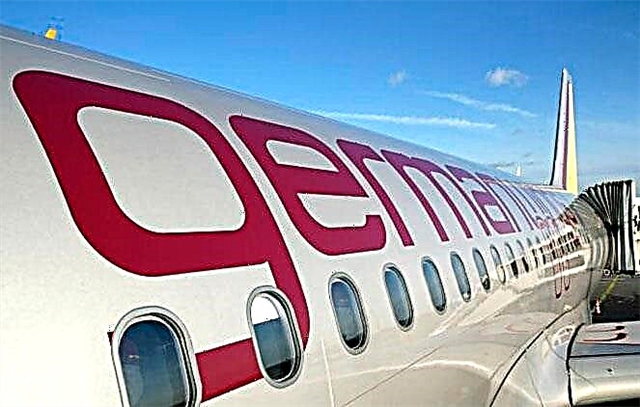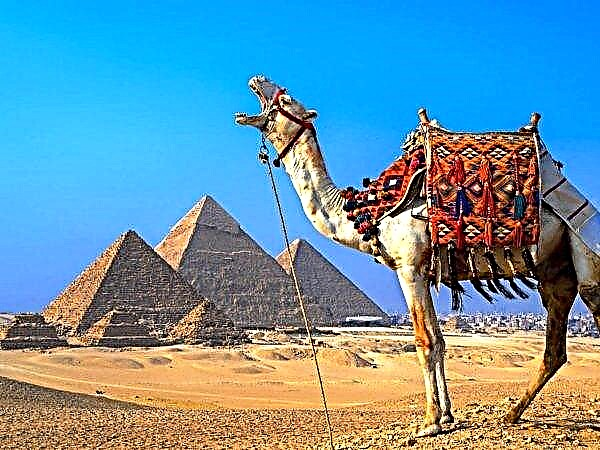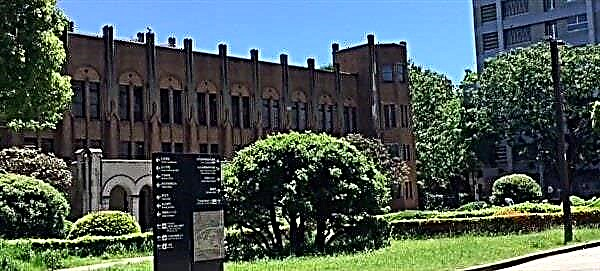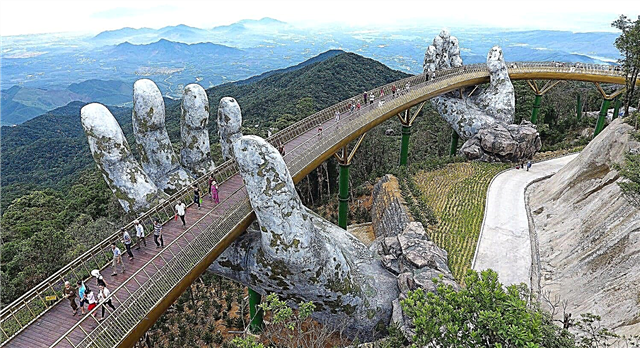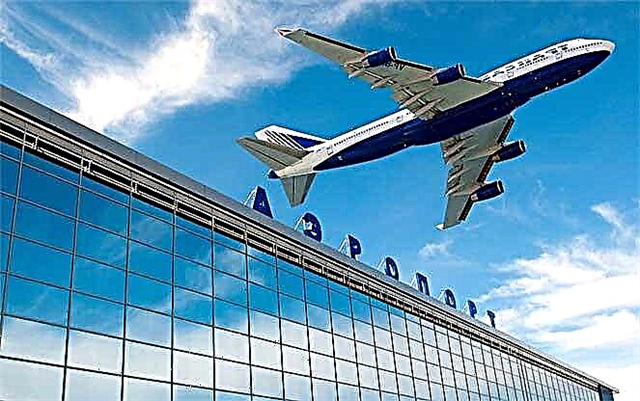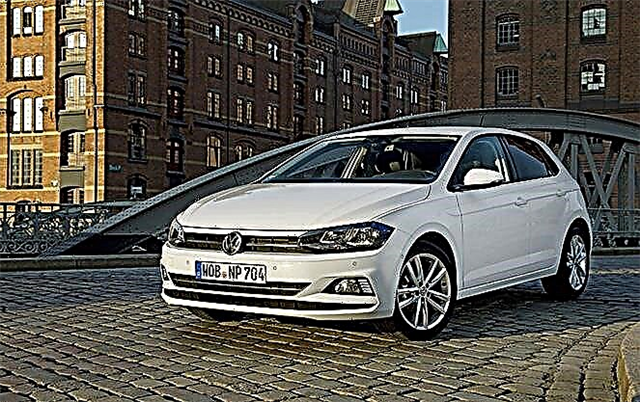The rebuilding of Germany after World War II from the ruins, later called an economic miracle, is largely the merit of the automotive industry, primarily the Volkswagen factories. In this article, we will tell you how the production of Volkswagen was revived in Germany, thanks to which the concern entered the top three world automakers, and its products gained unbreakable popularity among drivers and passengers.

About Volkswagen
The beginning of the existence of the Volkswagen automobile concern was laid in 1934 by a government order to engineer Ferdinand Porsche, which was supposed to create a “people's car”. The requirements were not the simplest: a reliable family car capable of accommodating a parent couple with three children, gasoline consumption - up to 8 liters / 100 km, speed - about 100 km / h, the maximum price of -1 thousand Reichsmarks (slightly below the annual salary of the average worker ).
The very next year, the designer created the first car model at a price of 990 Reichsmarks.
In 1936, in Saxony, not far from the Wolfsburg castle, which gave the name to the future city, the construction of a car factory was planned.
In the same year, three Volkswagen cars successfully completed the 50,000 km run. They made a splash among designers and drivers, and New York Times journalists for the resemblance to the May beetle gave it the name “beetle”, which is firmly stuck to the company's auto products for the coming decades.
Note that the test run of each Volkswagen was two million (!) Km.
The laying of the first stone, marking the beginning of the construction of the enterprise, took place on May 26, 1938, and immediately began to build a village for workers. However, the outbreak of World War II canceled plans for the mass production of family cars.
The plant carried out large military orders: during the war period, the company produced 70 thousand vehicles. And in 1944, American aviation practically destroyed the plant by bombing.
The British began to restore the carmaker: by the end of 1945, Volkswagen in Germany had already produced 1.8 thousand cars for the allied forces and the German post office.

In 1946, the British government ordered 20 thousand vehicles for the army. Three years later, by the time the concern returned to the control of the German government, 65 thousand were produced, and in 1955 - a million Volkswagens, most of which were exported.
In 1972, the Volkswagen Beetle set a record for sales in Germany. And a phrase popular among the Germans appeared, which declared the "beetle" a member of the family.
Today Volkswagen AG, together with Toyota and Renault-Nissan, is one of the three largest world car manufacturers. The company manufactures cars, pickups, SUVs, trucks, vans and motorcycles under a dozen brands. The quality and technological level of Volkswagen's “cars for the people” is not inferior to the models of premium and luxury cars.
In 2021, the management of the German concern announced its intention to invest $ 40 billion in the development of electric vehicles over the next five years. It is planned that by 2030 each Volkswagen model will have an electric twin.
Where are the factories "Volkswagen"
By the location of Volkswagen AG factories, one can study the geography of the planet: the addresses of production facilities are in Germany, Brazil, Argentina, Mexico, South Africa, Russia, Poland, Belgium, Spain, Czech Republic, China and a number of other countries.
For clarity, we present information on the main localizations of the concern's factories in the table:
| Plant location Country city | Produced car brands |
|---|---|
| Belgium / Brussels | Audi, Volkswagen |
| Bosnia and Herzegovina / Sarajevo | Audi, Volkswagen, Skoda |
| Britain / Crewe | Bentley |
| Hungary / Gyor | Audi |
| Germany / Dresden | Volkswagen |
| - ÷ - / Emden | - ÷ - |
| - ÷ - / Ingolstadt | Audi |
| - ÷ - / Neckarsulm | - ÷ - |
| - ÷ - / Osnabruck | Volkswagen |
| - ÷ - / Wolfsburg | - ÷ - |
| - ÷ - / Zwickau | - ÷ - |
| Spain / Landaben | - ÷ - |
| - ÷ - / Martorell | SEAT |
| Italy / Sant'Agata Bolognese | Lamborghini |
| China / Shanghai | Volkswagen |
| - ÷ - / Shanchum | Audi, Volkswagen |
| Poland / Poznan | SEAT, Skoda, Volkswagen |
| Portugal / Palmela | Volkswagen, SEAT |
| Russia / Kaluga | Volkswagen, Skoda |
| Slovakia / Bratislava | Volkswagen, Audi, Skoda, Porsche |
| France / Molsem | Bugatti |
| Czech Republic / Kvasiny | Skoda |
| - ÷ - / Mlada Boleslav | - ÷ - |
| - ÷ - / Vrchlaby | - ÷ - |
In addition to engines and components for cars, specialized enterprises of the German concern produce food products. At the Volkswagen Service plant in Wolfsburg, millions of packs of German sausages, branded ketchup and noodles are produced and sold to their employees.
Car news from the company
To understand how the German carmaker of global importance sees and creates its own (and partly ours) future, consider the latest Volkswagen models, revealing trends of improvement.
Volkswagen e-Golf 2021 (second generation), while maintaining practically unchanged appearance, has significantly changed its technical characteristics. More capacious batteries were installed in the electric car, the diagonal of the central touch screen was increased to ten inches, and the volume of the hard disk was increased to 64 GB.
A significant increase in the range (300 km) was provided by new lithium-ion batteries, which increased their capacity to 36.8 kW / h; the new rechargeable acid battery and transmission provide 136 horsepower, a top speed of 150 km / h and a capacity of 9.6 seconds. accelerate the car to 100 km / h.
The presence of climate control, infotainment system, heated seats provide a comfortable environment for the driver and passengers. Protective equipment, full power accessories and navigation guarantee maximum safety while observing road rules.
The Volkswagen Passat GTE plug-in hybrid is also available in sedan and station wagon variants and offers savings in urban driving. This model is ideal for short / medium distance trips due to the clean economical mileage of the vehicle. The mixed mode of operation makes possible low fuel consumption, minimizes carbon dioxide emissions.

The car's economy and high performance are evidenced by the presence of three-zone climate control, the Discovery Pro infotainment system, voice control with instant speech recognition and “five-star” safety (Euro NCAP classification).
And what makes VW Passat GTE fantastic is the Traffic Assist program, which brakes, accelerates and controls (!) A car at speeds below 40 km / h.
The announced models - Volkswagen e-Crafter, Volkswagen I.D., also attract the interest of motorists. CROZZ, Volkswagen I.D. BUZZ, Volkswagen I.D., - as indicators of large-scale, targeted and effective technological and technical research. Thanks to this, the concern secured itself the second place in the world among the sellers of passenger cars at the end of last year and is ready to fight for leadership.
How to visit a factory tour
The Autostadt museum and entertainment complex is the centerpiece and heart of Wolfsburg, the headquarters of the Volkswagen Group. This place is the epitome of the company, a tourist Mecca, open every day from nine to eighteen hours and visited annually by two million people.
The creators of Autostadt brilliantly completed the most difficult marketing and communication task. They have transformed the production and management complex of the German automaker into a popular tourist attraction in Germany that enhances the image of the Volkswagen brand.
The museum and entertainment complex stretches for five kilometers along the bank of the decorative channel connecting the center of Wolfsburg and the first plant of the concern. Through the efforts of the designers, the structures of the square, the green spaces that separate them, together with the installed countless sculptures and installations, have become a monument of landscape architecture.

In addition to cinemas, restaurants, a hotel, there is the Zeithaus museum dedicated to the history of the automotive industry, test drive tracks, attractions closely related to Volkswagen's activities, and pavilions with car models belonging to the concern's brands.
Seven operating pavilions represent various brands of Volkswagen, and each is made in a special style that affects all the senses of the tourists. They demonstrate the history of the concern, introduce them to the prospects and directions of development, while every three to four years the concept and exposition of each pavilion is changed.
Volkswagen models were given space by two glass twenty-storey warehouse towers that serve as an adornment of the complex, and a customer center, where buyers select models for every taste, size and value. If an individual order for the assembly took place, after a few months the client picks up the finished (in many ways unique) car.
The highlight of the excursion is a 45-minute tour of the “heart” of the Wolfsburg plant - a robotic complex of workshop No. 54, where robots weld, assemble, paint black bodies and complete the installation of a Volkswagen Golf.
Autostadt Wolfsburg provides its territory for various performances and shows; four weeks of summer are decorated with "dancing fountains" of almost 70 meters in height, winter - with a winter market and skating performances on an artificial ice rink.
Let's call the approximate ticket price:
| Visitor category | Ticket prices (euro), 1 day | Ticket prices (EUR), 2 days | Note |
|---|---|---|---|
| Adults | 15 | 22 | |
| Benefit categories (pensioners / students) | 12 | 18 | |
| Children under 6 years old | 0 | 0 | |
| Children and adolescents from 6 to 17 years old | 6 | 9 | |
| Families (two adults and children under 17) | 38 | 57 | |
| Evening ticket (after 16-00, discount on visiting cafes / restaurants) | 7 | - | |
| Guided tour of Wolfsburg (1-3 persons) | 300 | - | 3 hours, by car and on foot |
| - ÷ - (4-7 people) | 390 | - | - ÷ - |
| Guided tour of the Autostadt theme park, visit to the workshop (1-3 persons) | 410 | - | 7 hours, only on weekdays |
| - ÷ - (4-7 people) | 495 | - | - ÷ - |
Excursions to the museum and entertainment complex can be booked one month before the visit. Pre-registration is carried out by calling the service phone 0800 288 678 238 or by emailing [email protected]. For more and more detailed information, visit the official Autostadt Theme Park website.
Volkswagen in the Russian car market
The beginning of Volkswagen car production in the Russian Federation can be considered on November 28, 2007, when the Kaluga Automobile Plant (Grabtsevo Technopark) was opened. Initially, 20 thousand Škoda Octavia cars were produced by SKD, two years later they launched a complete car assembly line.
In 2021, the Škoda Fabia and Volkswagen Polo sedan began to be produced, and at the end of 2021, a body shop with an area of 12 thousand square meters was put into operation.
Now the Kaluga plant makes other car models: Škoda Rapid, Volkswagen Polo, Volkswagen Tiguan.
On June 14, 2021, Volkswagen Group Rus reached an agreement with the GAZ Group regarding the contract assembly of Škoda Octavia, Škoda Yeti, Volkswagen Jetta at the Nizhne-Novgorod GAZ plant with a design capacity of 132 thousand vehicles per year.
The branch of the Volkswagen concern has united six of its brands on the Russian market, bringing the volume of sales to Russian buyers to 175.6 thousand cars by the end of 2021. As a result, Volkswagen Group Rus achieved an increase in its share of the Russian auto sales market up to 11%.

The number of Volkswagen cars manufactured during the same period (167.5 thousand cars) turned out to be somewhat smaller. Taking into account the fact that the production of Škoda Kodiaq started at the Nizhny Novgorod plant in mid-February 2021, the concern intends to achieve new achievements.
Other German car brands
Germany, which produces 6 million high-end popular cars annually, is considered the leader in this field in Europe. The demand for products of not only large, but also medium-sized German car manufacturers is based on exquisite design and innovative technologies. Luxury and expensive German vehicles have a significant share of the global market.
The country's automotive industry is primarily represented by the five largest companies: Volkswagen AG, Daimler AG, BMW AG, Ford Germany, Groupe PSA.
The Daimler concern has been producing famous Mercedes-Benz cars for more than 90 years, but still popular. The name of the German car brand was given in honor of the daughter of Mercedes Jellinek, whose father was the head of the French representative office of the Daimler auto company. Mercedes-Benz cars are distinguished by their chic design and comfortable handling, which emphasize the status of the owner.
BMW, which began with the production of aircraft engines, celebrated its centenary in 2021. And for 80 years now, this automobile concern has been producing first-class motorcycles, sports and passenger models, the hallmark of which is a reliable and powerful engine.
The oldest German auto company, Opel, has been producing cars since 1899. But due to the crisis and unfavorable economic situation, the French concern Groupe PSA in 2021 acquired all the rights to the Opel trademark.
Audi AG, part of the Volkswagen Group, produces one of the world's most luxurious car brands, Audi. Thanks to the craftsmanship of the designers, these cars combine exquisite design with sporty performance.
Of the lesser known, it is worth mentioning the expensive cars Alpina, Bitter, Opel Monza, Maybach (unfortunately, the brand was recently liquidated), sports Isdera.
Finally
The Volkswagen concern has come a long and thorny path from its foundation in 1934, through post-war reconstruction, to unstoppable development and prosperity in the 21st century. Thanks to the efforts of the employees, the products of the German automobile plant are popular worldwide.
A brilliant advertising idea was the organization of excursions at the Wolfsburg plant.
It is noteworthy that the German company steadfastly endured all the blows of fate and then recovered, taking into account the experience gained and receiving an impetus for development.

